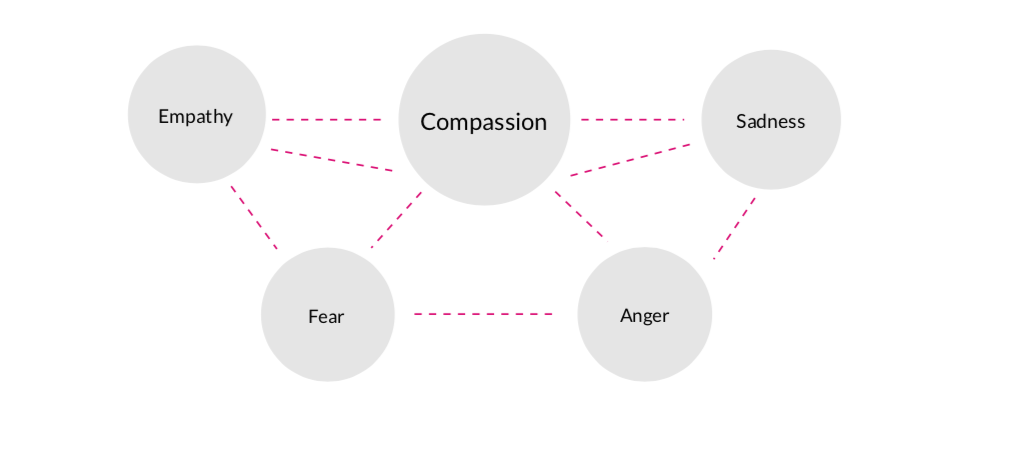Perth and Kinross, meeting three
June, 2018
In this session we chose to focus on the language of the standards and started with the newest addition – Compassion.
We started with language, as the the partners felt it was important to break down the meaning of the principles in order to understand how we could communicate, evaluate and assess whether they were being delivered.
Using worksheets, partners worked in different groups sharing anecdotes and experiences of how they or their organisation deliver compassionate care. They jotted down key words associated with these experiences, and developed some further questions that we could discuss in future sessions.
Our learning from this session prompted a sector call out through Iriss’s social media platform, for others to share their experiences of delivering compassionate care. A selection of compassionate care stories can be found on this blog.
The following images highlight the most popular views of what we think compassion, and compassionate care looks, feels and sounds like.
Learning summary
Partners explored the following subjects
What is compassion?
You need to be treated compassionately before you can show compassion to others
It can be as complex or as easy to describe as you want
It can mean many different things to lots of different people
Conversations about compassion can bring many emotions to the surface, which can challenge or inform your understanding of it
What does it look like?
- Creating a safe environment
- A space that communicated compassion non-verbally
- Being in the space with someone, both emotionally and physically
- Proximity to a person
- Can be a reassuring touch
- Responsive body language
What does it feel like?
- Being accepted
- Being patient
- Connecting with someone in particular space or moment
- Connection
- A sense of justice and fairness
- Sharing your relevant experience
Showing compassion?
- Showing compassion, is it an action?
- Do you have to consider what risks are involved?
- Should this be separate from personal feelings about compassion?
- Can it be carried through different services and process?
- How do you consider clients feeling of compassion to workers and the service?
- You need to know the whole story
- Gauging the level of compassion needed

